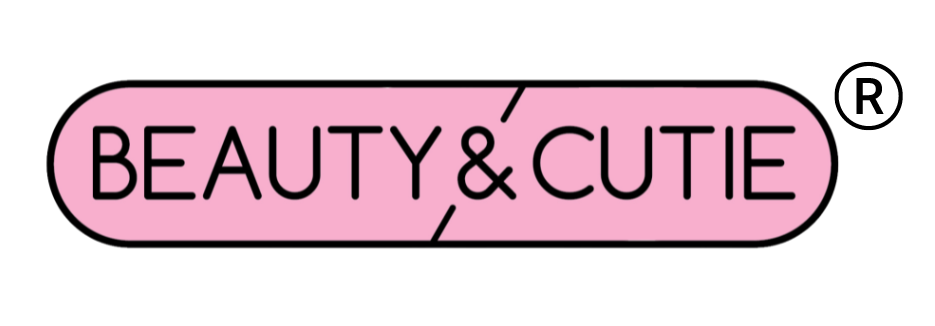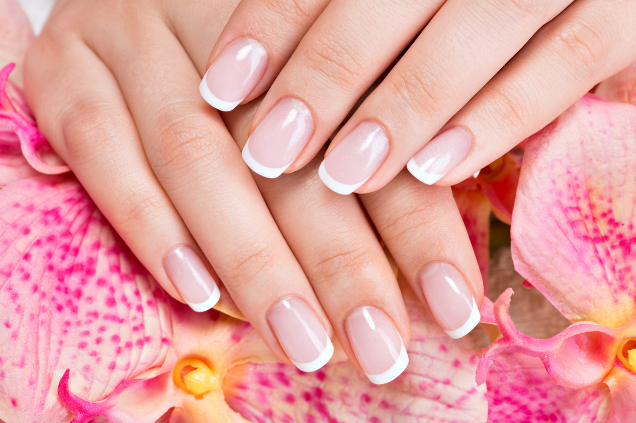Have you ever wished for longer, stronger nails but found the process to be tedious and time-consuming? Growing your nails fast can be a challenge, but it's not impossible. With a little patience and the right techniques, you can achieve the beautiful long nails you desire. In this article, we'll share ten tips to help you grow nails fast and have them look healthy and strong in no time. So, let's dive in!
How Long Do Nails Take To Grow?
The rate at which nails grow can vary from person to person. On average, nails grow about 0.1mm per day, which means it can take anywhere from a few weeks to a few months to see a noticeable difference in length. Factors such as age, genetics, diet, and lifestyle can all affect how quickly your nails grow.
Importance Of Healthy Nails
Healthy nails are not only aesthetically pleasing but also play an essential role in protecting your fingertips and improving your overall health. Brittle, weak, or discolored nails can indicate underlying health issues, such as vitamin deficiencies or fungal infections. Therefore, it's crucial to maintain the health of your nails alongside encouraging their growth.
How To Grow Nails Fast
Here are 10 tips to help your nails grow fast:
- Keep your nails clean and dry - Moisture can weaken your nails, so be sure to dry them thoroughly after washing your hands or showering.
- Maintain a balanced and healthy diet - Eating a balanced diet with plenty of vitamins and minerals can promote healthy nail growth. Focus on consuming foods high in biotin, vitamin E, and iron.
- Use a strengthening nail polish - Strengthening nail polish with ingredients like keratin or collagen can help protect your nails from damage and breakage.
- Keep your nails trimmed - Regularly trimming your nails can help prevent breakage and encourage healthy growth.
- Massage your nails - Massaging your nails with a nourishing oil like jojoba or coconut oil can improve blood flow and promote growth.
- Avoid harsh chemicals - Exposure to harsh chemicals like acetone or bleach can weaken your nails. Wear gloves when cleaning or working with chemicals.
- Take breaks from nail polish - Wearing nail polish for extended periods can dry out your nails and cause breakage. Take breaks in between polish applications to allow your nails to breathe.
- Don't bite your nails - Biting your nails can cause damage and prevent healthy growth. Consider using bitter-tasting nail polish to break the habit.
- Stay hydrated - Drinking plenty of water can help keep your nails hydrated, promoting growth and preventing breakage.
- Hair, Skin, and Nail Vitamins - Formulated with essential vitamins and minerals that promote hair and nail growth, as well as healthy skin. This supplement contains biotin (vitamin H), vitamin E, iron, collagen, and other nutrients that play a vital role in maintaining healthy nails.
Are There Any Natural Remedies That Can Help My Nails Grow Faster?
Yes, there are natural remedies that can help your nails grow faster. Here are a few options:
- Biotin supplements - Biotin is a B vitamin that is known to promote healthy hair and nail growth. You can find biotin supplements at most health food stores.
- Vitamin E - Vitamin E can help improve circulation to the nail bed, which can promote faster nail growth. You can apply vitamin E oil directly to your nails or take a supplement.
- Coconut oil - Coconut oil can help moisturize your nails, which can lead to faster growth. Massage a small amount of coconut oil into your nails and cuticles each day.
- Horsetail extract - Horsetail extract contains silica, which can help strengthen your nails and promote faster growth. You can find horsetail extract supplements at most health food stores.
- Olive Oil - Olive oil is rich in vitamin E and moisturizing properties that can help improve the health of your nails and promote faster growth.
These natural, home remedies can supper nail growth. Remember, it's important to be patient when trying to grow your nails. It can take several weeks or even months to see significant growth.
Why Is Good Grooming Important For Nail Healthy and Growth?
Good grooming is essential for healthy nail growth. Clean, well-maintained nails not only look great but are also less prone to damage and breakage. Here are some reasons why good grooming is important for nail health and growth:
- Prevents infections - Regular cleaning of your nails can reduce the risk of infections caused by bacteria and fungi. This is particularly important if your work involves handling dirty or contaminated objects.
- Strengthens nails - Regular filing and buffing of your nails can help strengthen them and prevent breakage. It also promotes blood circulation to the nail bed, which is essential for healthy nail growth.
- Hydrates nails - Regular moisturizing of your nails and cuticles can help keep them hydrated, preventing dryness and brittleness. This can also promote faster nail growth.
- Enhances appearance - Well-groomed nails not only look great but also boost your confidence. They can complement your outfit and add a touch of elegance to your overall appearance.
Your nails require regular attention to maintain their health and strength. Neglecting them can lead to infections, brittle nails, and slow growth. Manicures and good grooming practices are essential for healthy nail growth. By following these tips, you can achieve longer, stronger, and healthier nails over time.
Do Nail Strengtheners Help With Growth?
While some nail strengtheners or nail hardeners may contain ingredients that can help strengthen the nails and prevent breakage, they may not necessarily stimulate nail growth.
That being said, using a nail strengthener may still be beneficial for those looking to achieve longer nails. By strengthening the nails and reducing the risk of breakage, you can help prevent your nails from becoming damaged or breaking off, which can slow down the growth process.
Additionally, some nail strengtheners may contain moisturizing ingredients that can help keep your nails hydrated and healthy, which can also promote faster growth.
Do Nail Polishes Help With Growth?
The answer is no. Nail polishes are cosmetic products that do not contain any ingredients that can stimulate nail growth. In fact, some nail polishes may even contain toxic chemicals that can weaken the nails and slow down the growth process.
Is There Anything I Can Do To Avoid Breaking My Nails While They're Growing?
Yes, there are several things you can do to avoid breaking your nails while they're growing:
- Keep your nails hydrated: Dry nails are more prone to breakage, so make sure you're applying a moisturizing cream or oil to your nails and cuticles regularly.
- Avoid harsh chemicals: Exposure to harsh chemicals like cleaning products, acetone, and nail polish remover can weaken and damage your nails. Try to minimize your exposure to these substances or wear gloves when using them.
- Nail file regularly: Regular filing will help keep your nails strong and prevent them from snagging and breaking.
- Avoid using your nails as tools: Your nails are not meant to be used as tools, so avoid using them to open cans, scratch off stickers, or perform other tasks.
- Take care of your overall health: Your nails are a reflection of your overall health, so make sure you're eating a healthy diet, getting enough sleep, and managing your stress levels.
By following these tips, you can help ensure that your nails stay strong and healthy as they grow and avoid breaking them in the process.
How Often Should I Trim My Nails To Make Them Grow Faster?
Contrary to popular belief, trimming your nails does not actually make them grow faster. However, regular maintenance is still important for healthy nail growth. It's recommended to trim your nails every 1-2 weeks to prevent splitting or breaking, which can slow down nail growth. Focus on maintaining a balanced diet with plenty of vitamins and minerals, and be patient.
Conclusion
In conclusion, there are several effective ways to promote fast nail growth. By keeping your nails clean and dry, maintaining a balanced diet, using strengthening nail polish, and regularly trimming your nails, you can encourage healthy growth. Additionally, massaging your nails, avoiding harsh chemicals, taking breaks from nail polish, refraining from nail-biting, and staying hydrated are important factors. Consider supplementing with hair, skin, and nail vitamins that contain essential nutrients like biotin, vitamin E, iron, and collagen to support optimal nail health.
Final Thoughts
Enhance your beauty routine with Beauty and Cutie’s collagen powders. Designed to rejuvenate hair, skin, and nails, our formula supports healthy cell regeneration for a dazzling, vibrant look. Unlock your inner glow with the power of Beauty and Cutie!
Sources
- https://www.healthline.com/health/beauty-skin-care/how-fast-do-nails-grow
- https://www.uclahealth.org/news/how-biting-your-nails-is-affecting-your-health
- https://www.sinclairdermatology.com.au/explainer-whats-the-deal-with-acetone-nail-polish-remover-and-is-it-bad-for-your-nails
- https://healthandstyle.edu/nail-care/manicure-and-pedicure-health-benefits
- https://www.byrdie.com/how-to-use-coconut-oil-for-nails-4686912
- https://wexnermedical.osu.edu/blog/how-to-keep-your-nails-healthy
*These statements have not been evaluated by the Food and Drug Administration. This product is not intended to diagnose, treat, cure or prevent any diseases.


